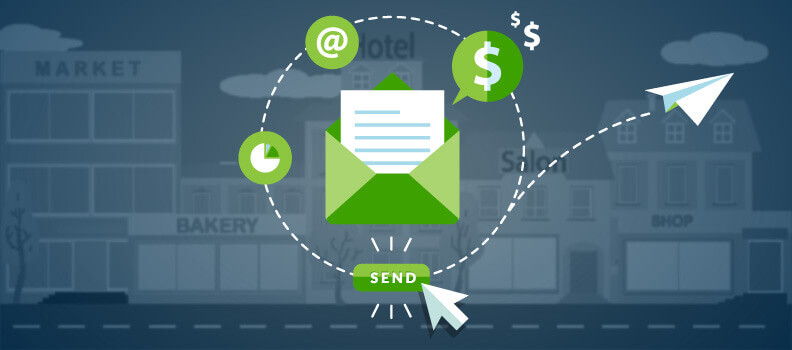Kirsten Burkard is a marketing specialist and lead editor of the Smile.io blog here to talk about making a strong rewards program. She’s passionate about excellent customer service, art, design. We had a chance to sit down with Kirsten to talk about rewards programs and how they can improve a business’s brand and bottom line.
Tell us a bit about your background. Why are you so passionate about customer experiences and rewards programs?
One of the best jobs I’ve ever had was at Walt Disney World, where I got the chance to work in entertainment for a summer. That summer, my eyes were opened to how incredibly detailed, intentional, and mind-blowing Disney’s customer experience is. At Disney World, nothing is coincidental and every cast member is committed to giving each guest the best experience possible.
I brought this passion back with me and began applying it to areas in my own life, and I quickly realized that a lot of those considerations are baked into what makes a rewards program so valuable to customers. With rewards, brands have the opportunity to deliver so much more than coupons or free stuff. They can completely redefine what their brand looks like to customers at every stage of the buyer’s journey. It’s those exciting possibilities that make my work so interesting.
Given how common loyalty programs are these days, how can a company make its rewards program stand out?
One of the best ways a brand can set itself apart is to focus on what makes them different. If you’re a cosmetics brand that only offers makeup in vivid shades of orange while everyone else works with pink, make orange the focus of your rewards marketing! Design a program that reflects your brand with custom photography and iconography, and work your values and differentiating features into your program name and currency. There are few things less intriguing than joining another “rewards program”, but joining “Orange Blush Beauty Perks”? That’s something I find interesting.
Finish this sentence: “The biggest mistake I see companies make when trying to operate a rewards program for the purposes of boosting profit is…”
…offering cheap rewards. There’s a very fine line between offering too much and too little; but as a merchant, it’s your job to find that balance. One of the key motivators for joining a rewards program is the promise of value, so when customers discover your program can’t actually deliver that value, it’s almost guaranteed that they’ll stop participating. This decline in engagement will ultimately hurt your margins more than offering customers a bit more upfront will.
For an e-commerce retailer who sells high-cost, low-quantity items, what are some strategies for implementing a successful rewards program?
Most high-cost, low-quantity items could be defined as “luxury” products. A rewards program should encourage this idea, which means avoiding heavy discounting at all costs. Instead, luxury brands should focus on creating a sense of exclusivity with product and experience rewards. Inviting your best customers to special events or offering them the chance to earn points-only products injects your program with a sense of status that is hard to resist. You can even take this one step further by introducing customer tiers. By separating your best customers, you give shoppers something to work towards that keeps them motivated and prompts them to return to your store more often—regardless of your products’ price points.
How can a company utilize social media to augment its loyalty programs?
Social media makes it extremely easy for brands to promote their rewards programs. By rewarding customers for sharing their products on social media, merchants can leverage each customer’s extensive social reach and mobilize them as brand ambassadors. This is also an extremely easy and profitable action to encourage. With customers spending more and more of their time online, social media is always close at hand, which makes it easy for them to engage anytime, anywhere.
Are there any major no-nos when offering rewards to customers in exchange for writing a product review?
Customer reviews are all about trust. New and returning shoppers are more likely to purchase your products based on a friend’s recommendation than yours, which means you want to ensure that every review is honest and organic. With that in mind, the worst thing you could do for the “health” of your product reviews is to promise customers a certain reward for leaving positive reviews. While this type of promotion will definitely prompt customers to leave reviews, it will also dilute (or flat out kill) the trust customers place in them.
What are some innovative ways to revive or increase interest in an existing rewards program?
Rewards programs are not “set it and forget it” tools, which means that the best way to get customers interested is to continuously add something new. This can take a number of different forms. On a smaller scale, updating your explainer page or customer account center with new photography or branding can give it a facelift that once again makes it exciting for customers to explore. If you’re looking to ramp it up, bonus points days are a fantastic way to get customers pumped up about your program. You can even follow this type of promotion up with a redemption campaign that increases the value of a customer’s points for a certain length of time. No matter what you choose to do, the key is to remember to revisit your program structure regularly. This scheduled “maintenance” is what keeps your program attractive and valuable for both new and returning customers.
What’s in store for the future of rewards programs? Will they undergo any significant changes over the next decade or so?
The biggest change rewards programs can expect to see over the next ten years is the introduction of bigger and better technology. Brands like Starbucks are already paving the way with their world-class rewards app and mobile payment system, but that’s just the beginning. As virtual reality continues to grow in popularity, it’ll begin to manifest itself in more and more customer experiences, pushing merchants to consider how to incorporate it into their rewards programs. Gamified experiences are also going to creep into more rewards programs as customers continue to demand bigger and better ways to engage on a daily basis. Throughout each of these changes, more emphasis will be placed on brands’ larger customer experiences, thereby entrenching rewards programs into the very fabric of what makes them unique.
Use Salesgenie today to get the best data for your next rewards program today!






